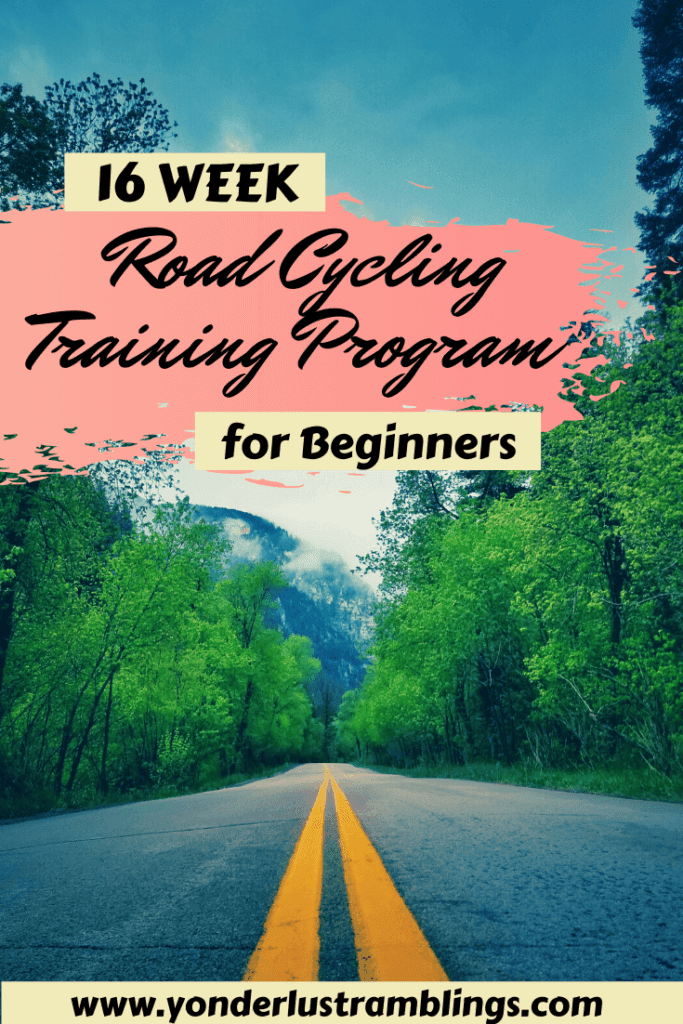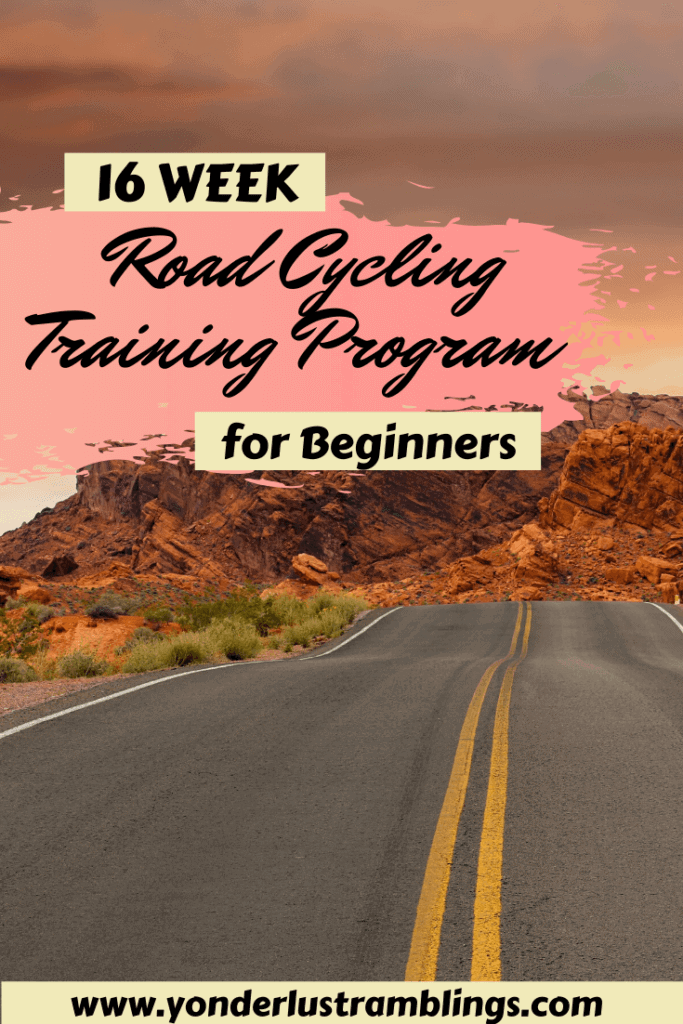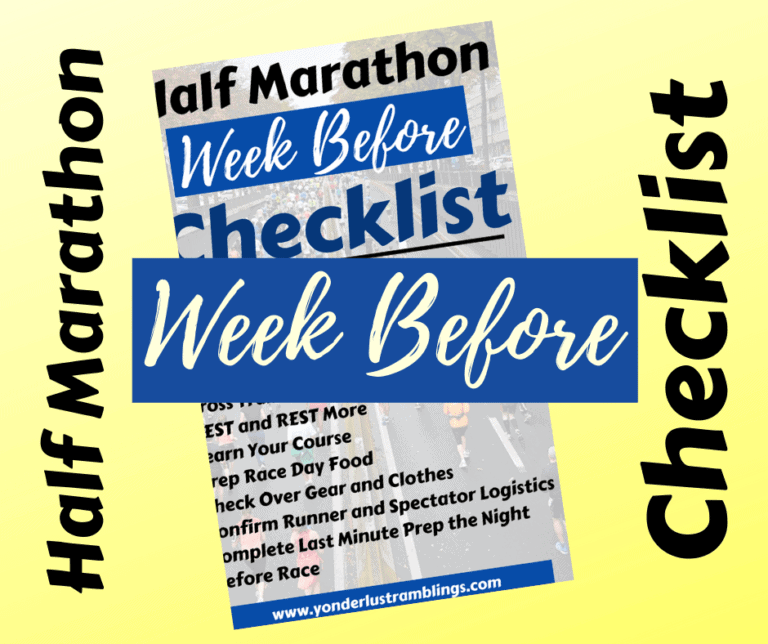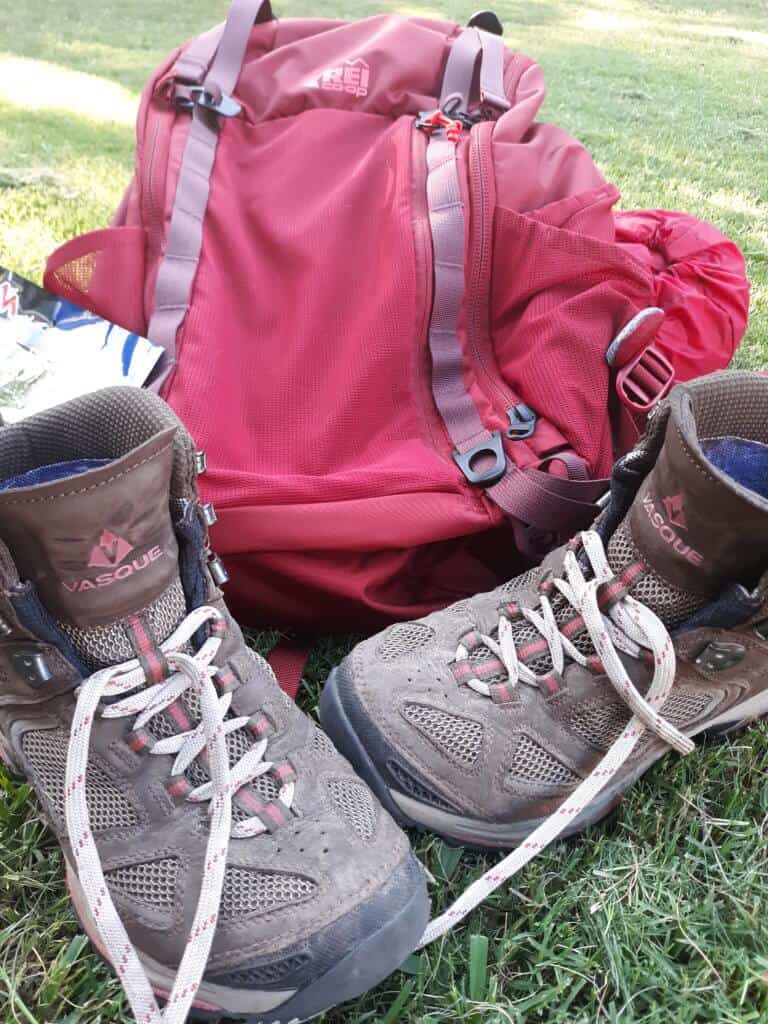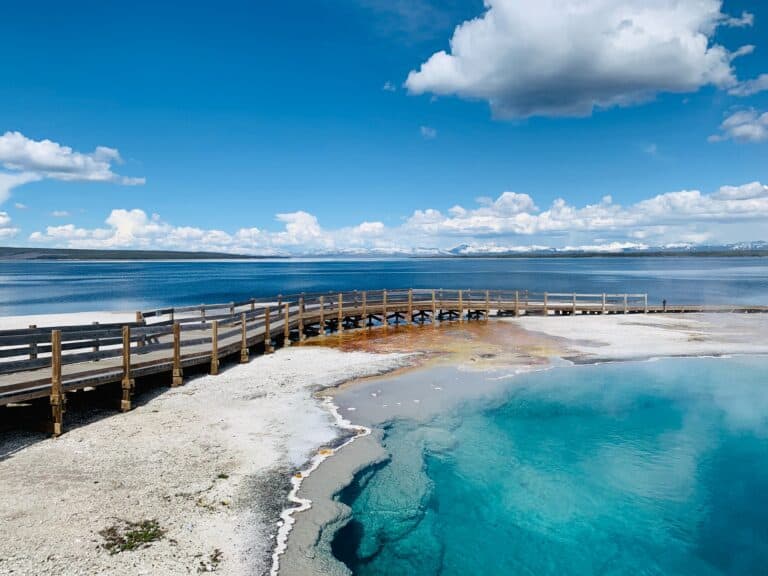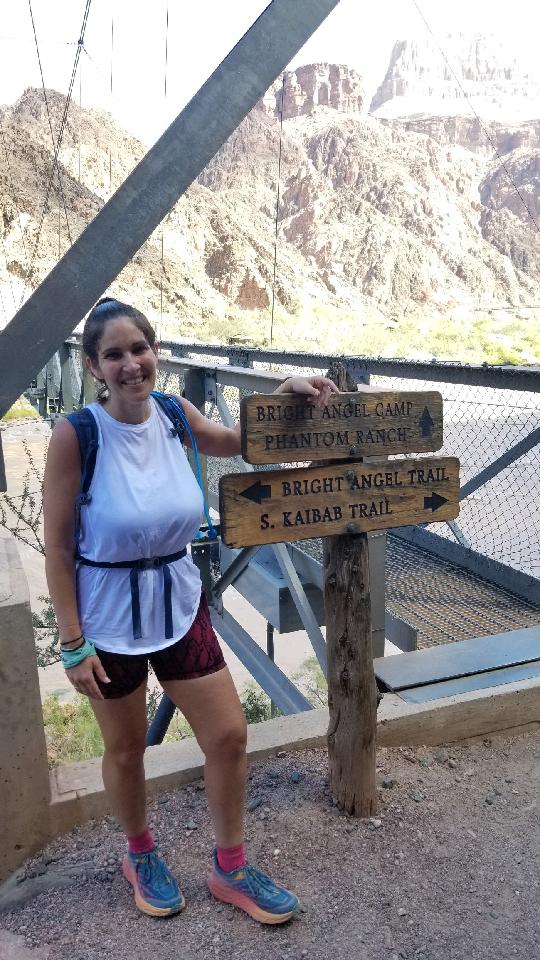16 Week Road Cycling Training Program for Beginners
So you are ready to start training for a road cycling race? That’s great, because not only is road cycling a great addition to any active travel lifestyle, but there are so many benefits to adopting a routine of road cycling. Training for a long distance road cycling event is much the same as training for a long distance running event. It is all about intentional increases, intentionally planning, cross training, and rest. I have outlined a specific 16 week road cycling training program for beginners here, to take all the worry out of planning for your first beginners road cycling event! Plus you will also get access to a customized 16 week training calendar as part of this program!
Disclosure: Below are some affiliate links-these are all products I highly recommend. I won’t make any recommendations on this page that I haven’t tested or personally used!
Table of Contents
Road Cycling Training Program for Beginners
Prior to road cycling, my own active travel consisted primarily of participation in destination running events or “runcations”. I began road cycling as a way to initially add some variety to my cross training portion of my 16 week half marathon training plan, and from there it blossomed into its own stand alone active travel pursuit.
Once you have successfully navigated the beginner ins and outs of road cycling, its time to put that knowledge to use and take on a road cycling race! But before you start, it is crucial to have a thorough training blueprint. If there is one thing I have learned about training for any active travel pursuit, it is that you must have a schedule, and it must be intentional and planned out. In order to understand which training timeframe is ideal for you, let me first go over the different racing distances to expect in a road cycling racing event.
Ready to grab your own customized 16 week cycling training calendar?
Different Lengths of Organized Road Cycling Events
The most popular road cycling race lengths are century races, which are 100 miles in length, half century, which are 50 miles, and shorter lengths such as 30 or 25 milers.
My advice would be to start with a shorter race the first time up, just to get the lay of the land and get used to participating with other racers on the road. My first road cycling races were 10 miles, then a 30 mile event. I felt physically able to complete more at the time, but felt it was wise to take a small step so that I could get used to the situations that one might encounter in a race with hundreds of other participants and their bikes, as well as effectively implementing the right road rules in an event setting.
11 Tips for a 16 Week Road Cycling Training Program for Beginners
One thing I have learned about implementing a road cycling training program for beginners, is that you cannot just wing your cycling training. You have to intentionally schedule your training rides, and be consistent each and every week. This is perhaps the hardest part about any training program. Your mind will always look for excuses to get you out of having to train.
“It is too cold outside to ride”.
“I am too tired”.
“My favorite show is on”.
If you do not have a pre-planned out formula set in stone, it will be all the more easier to give in.
When you already know that a training ride is part of your agenda for the day, you will start to adopt it and stick to it. Do not wait for a day where you “just feel” like training, do it regardless because you said you would, when you began following this road cycling training program for beginners!
I’m a believer in the 4 month / 16 week training plan, for all my active travel training pursuits, whether that is training for a big run, hike, or ride. I believe 3 months is the minimum it takes to effectively and safely train for any big physical feat, but an extra month at the onset allows you to build a really strong foundation, before really beginning your big increments. It also builds you in more bubble time, for things that come up unexpectedly.
I have found improved resistance to burnout and injury with a 4 month plan, which is why I recommend for this road cycling training program for beginners schedule that a great place to start is a 16 week plan, with three training rides each week, with the exception of your final week.
My recommendation for the amount of training rides to complete each week for your first road cycling race mirrors the advice I give in my 16 week half marathon training plan. In order to avoid burn out and injury, it is important to find the sweet spot of training. This is why I recommend three weekly training rides versus four.
Instantly attempting to cycle four times a week might actually decrease your performance, as your body needs the rest to prevent overuse. It is true that in comparison to running, road cycling is significantly lower impact on the body, and evidence suggests that cyclists do indeed run a lower risk of injury. However, there is still a need to cycle effectively and make the most of your rides, not just rack up the number. It is about quality, not quantity. In addition to your three weekly training rides, you should also build in two days of rest and two days of cross training and stretching.
Training Tip #1: Intentionally Schedule Your Weekly Rides
Training for any distance event is a mental game. If you tell yourself that you will train “when I have some free time”, your mind will attempt to talk you out of it every time! You have to intentionally set aside the time, and consistency is key! The one thing that has worked like magic for me is to have designated “cycling” days, each week, and these days never changed (with the exception of acts of nature like thunderstorms!). Otherwise, I know I will come up with a million reasons why I cannot get around to my road cycling. For me, if it is scheduled on my calendar, not completing it is not an option!
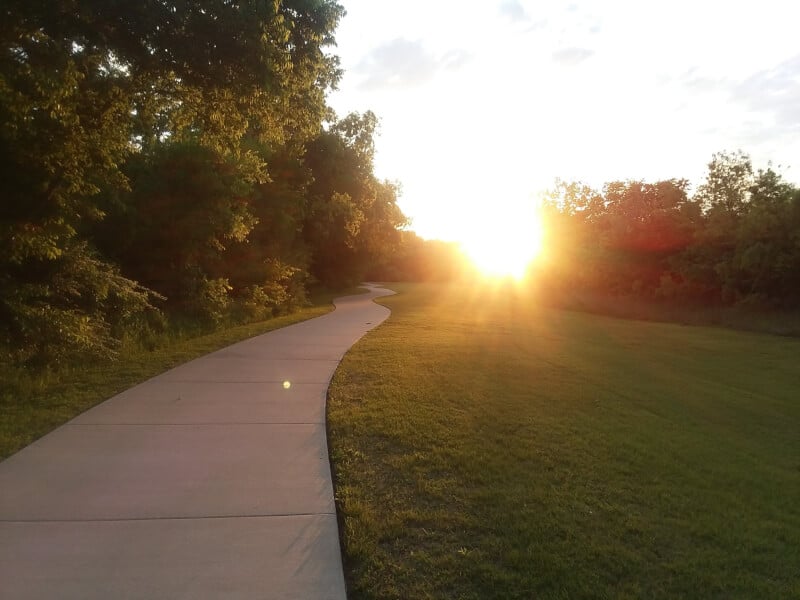
My designated road cycling days are Tuesdays, Thursdays, and Saturdays, as shown in my plan below. Tuesdays and Thursdays are my shorter ride days, and Saturdays are my longer days where I gradually build up my mileage each week in slow increments.
Sure, things come up and adjustments have to be made, like for weather or sickness. But if you have your cycling days marked on the calendar and have given them priority, you will find that other things that pop up have a way of being able to be worked around your cycling schedule.
Yes, I literally have my cycling days marked on my calendar, four months out, and I highly recommend you plan out your days as well. I even go so far as to check off or highlight each run from my calendar when completed. I give myself 4 months to train for every long distance road cycling event I take on, so my calendar will have my entire 4 months of Tuesdays, Thursdays, and Saturday rides mapped out in advance.
Training Tip #2: Pick a Destination Road Cycling Race
This is not a hard and fast rule, but I recommend it because I have personally found that it offers me the most motivation. Knowing your end game gives you a reason to train, and something to look forward to. Active travel is the best reason to travel, and I have continually found that exploring a new destination while connected to the road in this unique way is one of the best way to become intimately acquainted with that spot!
It is simply a strategy to keep you motivated throughout your training, because it can and often does become grueling. Boredom and burnout are real things that you need to be aware of and be prepared for. I prepare for them by selecting a really awesome destination race that I cannot wait to visit! Besides, if you have already picked out a race, paid for it, and secured your travel plans, you are far less likely to back out of that first big road cycling event!
So what’s the easiest way to find cycling events near me?
Give yourself as much motivation as possible, because again, finishing that century or half century race is largely a mental game! And once you have your destination race selected, do some research into other things to enjoy in that destination after your race! For me, that usually involves an awesome place to go eat, followed by a cool hike or other active travel offerings in the area.

Training Tip #3: Schedule Rest Between Your Rides
As important as it is to schedule your rides, schedule your rest! I give myself two rest days a week, Sundays and Wednesdays. When you are training for a big race, getting those rides in will almost start to feel like your religion, and it will become hard to sit still. But again, be intentional in your rest, because it is very, very difficult to come back from an injury due to overuse, or to stay motivated when you begin to feel the gnaw of burnout. You may feel like you can take on the world some days, but rest days are crucial!
Taking an extra day off, or a reduced mileage day, is not a terrible idea either. I usually try to schedule one every three or four weeks of training. You will see them built into my cycling training program for beginners plan.
One final thought on rest is that you also need to give yourself grace and listen to your body. Not all your rest days will necessarily fall into a nice compact category or planned day. Sometimes, your body will tell you when you need to stop your ride early, or take an extra day or rest. Do not beat yourself up over that. It is important to know the difference between having a strong mental game and still knowing when to ease up when it is needed.
Training Tip #4: Schedule Strength Training/Cross Training/Stretching Days
As you can see, intentional scheduling is a critical component. I cannot emphasize being intentional enough! If all you do is cycle, you run the risk of burning out, mentally and physically. Your body will perform at its peak when all the muscle groups are firing symbiotically. You need all those muscle groups not only to perform at your best, but to avoid injury.
So even though you might feel that another training ride is more beneficial, be consistent in giving your body alternative forms of training. This can take many different forms. I personally enjoy mixing in yoga specifically designed for cyclists, Pilates, kayaking, high intensity interval training, running, a quickly paced hike, or sometimes just going for a walk with the pups. My weekly cross training days are Mondays and Fridays.
- HIIT workouts are great for cross training – grab your own customizable at home HIIT workout plan HERE!
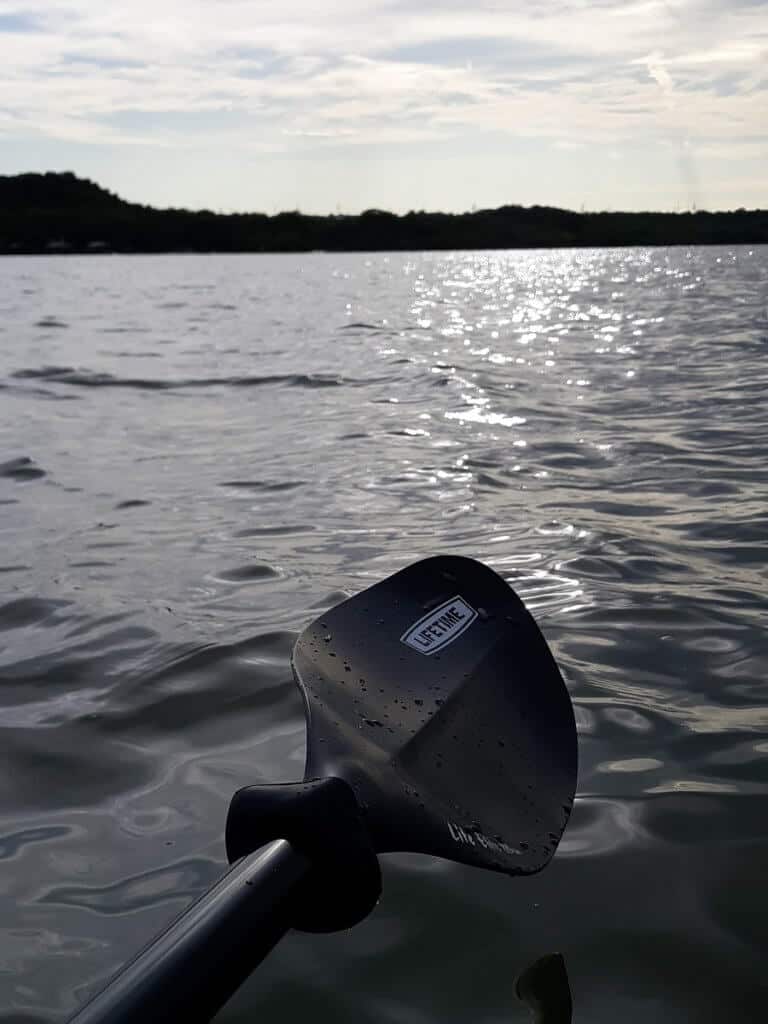
Training Tip #5: Invest in Proper Nutrition for Your Rides
You will hear the term “carb-loading” when you talk to runners, hikers, cyclists, and other high endurance, high stamina athletes. True, carbs are an integral part of a successful race day or major performance day, but when you are training for the months leading up, you will want to be conscientious and mindful of your nutrition.
I love my carbs, but there are ways to get them in healthier versions. In addition to healthy carbs, think foods like almonds, eggs, sweet potatoes, whole grains like bread, cereal, and pasta, chicken, fish, beans, yogurt, fruits, and vegetables, and the like.
Grab this handy personalized weekly meal tracker!
You may want to cut down or cut out alcohol in the months or weeks leading up to a big race. This is up to personal preference, but many people, including myself, find increased performance and quicker recovery without drinking for a month or two before race day.
Drink lots of water, consistently. Even in cold weather, your body will sweat when you run. For especially hot and longer rides, ensure that you monitor and replace your sodium levels in addition to your water intake.
Check out this easy to use Daily Water Tracker!
One final thought in regards to fueling your body on race day. Here’s the scenario I have often encountered: I have eaten and fueled with the same consistent foods in the months leading up to my big race, and I know exactly how my body reacts to each one, and exactly what works for me. Then the day before or the morning of race day, a fellow cyclist, runner, hiker, etc. shows off what they use for fuel, and the temptation to partake in that “shiny” new product overrides my own common sense. Race day is not the time to experiment with any new fuels, regardless of how cool they look, or what that other athlete swears by! Whatever you have been fueling with in the months leading up to your big race, is what you need to fuel with the day of your big road race!
Training Tip #6: Increase Mileage Intentionally and Gradually
Once you get rolling through your training rides, you are going to have those days where everything is clicking and you just know you could do 70 miles on your bike, even if you are only slotted for a 30 mile training ride! It is hard to reign in the horses in those situations, but better for you in the long run to stick to your planned weekly increments.
You want to increase your mileage in weekly increments. Going all out before your body is ready will make you more prone to injury, overuse, and burnout. Schedule your weekly increments, and stick to them!
Training Tip #7: Listen to Your Body
I touched on this briefly before, but it is such an important point that I am going to repeat it again here. Listening to my body is personally a tough one for me. It is hard not to somehow equate that to failure. I have a lot of confidence in my abilities, and it is hard for me to acknowledge when my body is telling me to give it a break.
Your mental mindset will be tempted to overpower your internal body’s voice, and tell you that little twinge of pain you feel is no big deal and you can power through it. But in these cases, it is best to listen to your body.
You can always come back from a botched training ride that didn’t go how you planned it, but you cannot always come back from an injury. Know that you WILL have bad training rides, and often you won’t even know why. The stars just won’t align some days, but it won’t be the end of the world. Keep the big picture in mind on those days. It is about quality, not quantity in your cycling training program for beginners plan!
Training Tip #8: Vary Your Cycling Routes and Explore New Roads
This tip primarily takes aim at the real threat you may face, and that is boredom and burnout! To be fair, these two co-conspirators often rear their ugly head during any of my training plans, whether I am fighting boredom while climbing my treadmill on incline, or boredom cycling the same backcountry roads, or boredom over doing the same yoga routine on my cross training days.
If during your training schedule you begin to feel a little under-motivated, try picking out a new route to cycle, or going a different direction on your regular rides, or adding some hills and varying terrain to your regular course. Turn it into a creative checklist if necessary, such as making it a personal goal to complete a training run in each of the surrounding cities or parks.
If you are getting adventurous and creative, keep in mind to approach this method with some methodical planning. In my intro to road cycling for beginners, one of my tips is to map out your rides in advance. This way you know of any obstacles you might encounter, where the most ideal stopping or turning around spots are, and what hills you may need to prepare to power through. Nothing is more deflating than having to stop or alter a ride unexpectedly, so I try to minimize the occurrence of that happening as much as possible by planning and researching in advance.
Training Tip #9: Choose Solo or Group Road Cycling
Again, another personal choice, depending on what your internal motivators are. I would recommend trying out both, and see if you enjoy the peace and solitude of a mind-clearing solo ride, or the collaborative morale boost of a group ride! Most large cities now have cycling clubs, or you can find plenty of options on social media, such as Facebook cycling groups. A lot of bike shops also put on their own social rides, as well as local neighborhood groups. There are so many options out there these days for finding local cycling clubs or groups, it does not have to be intimidating!
If you choose to go cycle solo, take the necessary precautions to ensure your safety. Let someone know ahead of time where and when you are going for your ride, and what your anticipated course is. Always be aware of your surroundings and keep your eyes on the road at all times. Scan, scan, scan!
Have a way to carry your phone with you, so that you have it at all times in case of an emergency. Use common sense if wearing earbuds, though I do not recommend this if you are road cycling on a road trafficked regularly by cars. There are certain situations, such as close proximity to a busy road, that may necessitate going music-less so that you can pay attention to your surroundings.
Training Tip #10: Get the Best Cycling Gear
There are several key items that are beneficial to a successful 16 week road cycling training program for beginners. For a complete list of all the necessary gear, equipment, and clothing, including where to find current prices listed online, visit my guide to road cycling for beginners. Below is a quick links summary of recommended beginner cycling gear:
Recommended Cycling Gear Quick Links:
Prefer to have these items in a checklist?
Training Tip #11: Collaborate with Others for Your Road Cycling Success
You may be wondering how to increase your speed, how to power through hills, how to treat an injury, or interested in helpful cross training recommendations. One of the best ways to improve your performance and increase your knowledge is to lean on others. In today’s age of social media, there is no reason why you cannot glean experience from others. There are Facebook groups and other social media channels dedicated to all things cycling, no matter what type of cycling event or cycling race distance you plan to participate in: road cycling, mountain biking, half centuries, and full centuries. Join one, be an active member, and grow through others!
The *BEST* Part of Your 16 Week Road Cycling Training Program for Beginners
Now for the best part! So this post has built the skeleton for you for an efficient road cycling training program, one that you can implement with consistency and intention-ality. But what about filling in the muscles of that skeleton?
I have taken the worry and planning out of that for you! I have broken down both the full century and half century races into concise 16 week calendars, with each week already pre-filled with what activities, mileages, and increments need to be completed each week.
Your intentional increases for your long runs are already done for you. What weeks to plan a rest week are already done for you. When to cross train and rest for those 16 weeks, already done for you! It’s as simple as a click to get your FREE training program PDF. The hard work and the planning has already been done for you, so now you can get to cycling!
Happy cycling and racing!
PIN for LATER!
Disclosure: Below are some affiliate links-these are all products I highly recommend. I won’t make any recommendations on this page that I haven’t tested or personally used!


